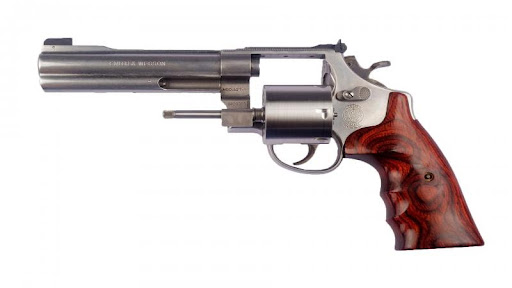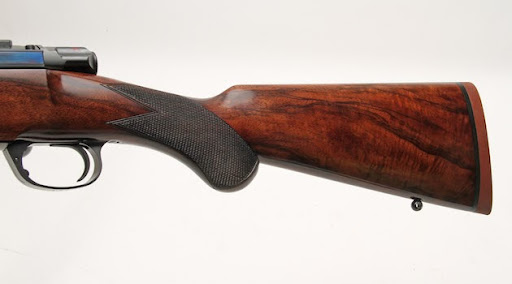Firearm Basics: Key Components and Parts of a Firearm
Posted by Ranger Point Team on Jan 27th 2022
Firearms are a category of weapons or devices that can make use of heat and pressure to launch projectiles (ie: bullets) at targets. These techniques can be used in different types of weapons, such as guns, cannons, and even archaic muskets. Firearms come in various shapes and sizes, but they all have firearm parts that perform certain functions, defined by the firearm's purpose.
Firearms are machines designed to launch projectiles at very high speeds. They come in many different shapes and sizes, but they all have the same basic parts that you've just learned about. Knowing these parts will help you identify them in the future if you know what to look for.
A firearm can be broken down into three categories: handguns, rifles, and shotguns. They each have different components that perform specific functions to launch projectiles at a target successfully. The three basic parts of a firearm typically fall under one of these main categories: trigger group, stock, and barrel.
Read ahead to learn more!
Basic Components & Parts Of a Firearm:
The Trigger Group
One of the most important firearm components is the trigger group, which can typically be defined by two components: the trigger itself and the hammer. The most basic of these parts is likely to be the trigger; its sole purpose is to release the hammer.
Depending on the specific purpose of the firearm, the trigger may function differently. There are three common types of triggers: single-action, double-action, and triple-action.
Single action is likely to be one of the simpler types of triggers found on firearms. The trigger performs only one task, which is releasing the hammer or firing pin. This can typically be found on handguns or revolvers. An example of this type of trigger is the revolver's hammer, which must be cocked before it can be fired.
Double action, as opposed to single-action triggers, perform two tasks: releasing the hammer and cocking the hammer. These types of triggers are generally a bit more complex than their counterparts. A perfect example of this type of trigger is the modern autoloading pistol. The slide will both cock and release the hammer.
Triple-action triggers are almost exclusively found on shotguns, whose sole purpose is to release the hammer. These types of triggers are usually less common than single or double action due to their lack of ability to fire the weapon.

The Stock
The stock of any firearm is the part of the gun where shooters will be gripping the gun when firing, so it's important to make sure that it fits comfortably in their hands.
A proper fit can eliminate many safety concerns, while a poor fit can cause injury or even death to those using them. Rifles are likely to have different stock than a handgun simply due to their size and durability for use with heavier calibers.
Ammunition is likely to be one of the most important parts of a rifle. Ammunition will vary depending on what type of firearm is being used, but its main purpose remains constant: launch projectiles out of the barrel at very high speeds.

The Barrel
A barrel is likely to be one of the most simple parts of a firearm. Its sole purpose is to channel projectiles fired from the gun into a specific path by giving them directionality. A barrel may vary in length depending on what it was manufactured for, but it will usually not change much during use because of its simplicity.
Typically, the longer the barrel of a firearm is, the higher velocity it will be able to attain.
Anatomy Of A Firearm
Now that you know what components are found on firearms and how they function, you can take this knowledge and apply it to different types of firearms. While there are many types of firearms, they all have the same basic parts and components. The firearm type will affect what some of the parts look like, but they all function similarly.
Firearms can vary in size from very small handguns, such as concealable pistols, to large long-range rifles. Firearms are often broken down into these categories or others based on their intended use, which will affect their parts and components. Some of the most common types of firearms are handguns, shotguns, rifles, and machine guns. Each one of these has a different set of gun components that they commonly contain, but there are similarities in each one.
Wrapping up
Now that you've learned about some of the parts of a firearm, how they function, and what types of firearms are out there, you should be able to grasp this concept more easily.
Knowing each specific part of a firearm can help you identify which one is which in the future. Once you know what types of firearms exist and their parts, you can also use this knowledge to help others understand the basic parts of a gun and their functions!
Happy Shooting!
Frequently Asked Questions
What are the wood parts of a firearm?
The wood parts of a firearm typically include the butt stock and forend.. The butt stock is the part that is typically held against the shoulder when firing the weapon. The forend is the forwardmost part of the rifle which is used as a grip and is typically made out of wood or plastic.
What are the three main parts of a rifle?
A rifle has three main parts: the barrel, the stock(s), and the receiver action. On a lever action, there are two stocks: the butt stock and the forend.
The barrel is the long metal tube that the bullet travels down to exit the gun. The stock is what the gun rests against your shoulder with. And the action is all of the moving parts inside of the gun that allow you to fire it.
Where to buy rifle parts?
There are a few different places that you can buy rifle parts. You can purchase them from gun stores, sporting goods stores, or from online retailers. It really depends on what type of rifle you have and what specific parts that you need. Ranger Point Precision is a great option to purchase lever action rifle parts (like handguards, levers, loading gates, etc.)!

